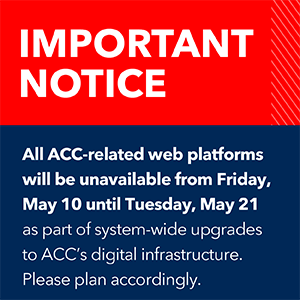Stent Restenosis Study I - STRESS I
Description:
Stenting vs. PTCA for angiographic restenosis in CAD.
Hypothesis:
Stents may reduce the chance of restenosis by decreasing the elastic recoil of the vessel and sealing intimal flaps, thus providing a wider, smoother coronary lumen.
Study Design
Study Design:
Patients Screened: Not given
Patients Enrolled: 410
Mean Follow Up: 6 months
Mean Patient Age: 60
Female: 22
Mean Ejection Fraction: 61 ±12 (stent); 61 ±11 (PTCA)
Patient Populations:
Symptomatic ischemic heart disease and new lesions of the native coronary circulation
≥70% stenosis
Lesion <15 mm in length and could be spanned by a single stent
Vessel diameter of at least 3.0 mm
Exclusions:
Myocardial infarction (MI) within the previous seven days
Contraindication to aspirin, dipyridamole, or warfarin sodium
Left ventricular ejection fraction of 40% or less
Angiographic evidence of the following:
coronary thrombus, presence of multiple focal lesions
diffuse disease
serious disease in the left main coronary artery
ostial lesions
severe vessel tortuosity
Primary Endpoints:
Angiographic evidence of restenosis, defined as at least 50% stenosis on the follow-up angiogram.
Secondary Endpoints:
Angiographic endpoints included evidence of procedural success and the absolute minimal luminal diameter after the procedure and at follow-up. (Success was defined as a reduction in stenosis to 50% or less, by quantitative analysis.)
Clinical endpoint was a composite endpoint and defined as whichever of the following occurred first: death, MI, coronary bypass surgery, or the need for a repeat PTCA within the first 6 months (±60 days) after the initial revascularization.
Drug/Procedures Used:
Stent placement, PTCA
Concomitant Medications:
Nonenteric aspirin, 325 mg/day; dipyridamole, 75 mg tid; treatment with a calcium-channel antagonist initiated at least 24 hours before the procedure; low-molecular weight dextran 40, IV dose of 100 mL /hour for two hours before stenting and at a dose of 50 mL/hour during and after the procedure (for a total volume of 1 liter); heparin, initial bolus injection of 10,000 to 15,000 U during the procedure and supplemented as needed to maintain an activated clotting time of more than 300 seconds; warfarin sodium and heparin, until a prothrombin time of 16 to 18 seconds was achieved (international normalized ratio, 2.0 to 3.5
Principal Findings:
The patients who underwent stenting had a higher rate of procedural success than those who underwent standard balloon angioplasty (96.1 percent vs. 89.6 percent, P = 0.011), a larger immediate increase in the diameter of the lumen (1.72 ±0.46 vs. 1.23 ±0.48 mm, P <0.001), and a larger luminal diameter immediately after the procedure (2.49 ±0.43 vs. 1.99 ±0.47 mm, P < 0.001).
At six months, the patients with stented lesions continued to have a larger luminal diameter (1.74 ±0.60 vs. 1.56 ±0.65 mm, P = 0.007) and a lower rate of restenosis (31.6 percent vs. 42.1 percent, P = 0.046) than those treated with balloon angioplasty.
There were no coronary events (death; myocardial infarction; coronary-artery bypass surgery; vessel closure, including stent thrombosis; or repeated angioplasty) in 80.5 percent of the patients in the stent group and 76.2 percent of those in the angioplasty group (P = 0.16).
Revascularization of the original target lesion because of recurrent myocardial ischemia was performed less frequently in the stent group than in the angioplasty group (10.2 percent vs. 15.4 percent, P = 0.06).
At 1 year, 154 patients (75%) assigned to stent implantation and 141 (70%) to PTCA were free of all clinical events (death, myocardial infarction, or any revascularization procedure), and 162 stent patients (79%) and 149 PTCA patients (74%) were free from death, myocardial infarction, or target lesion revascularization.
Interpretation:
In selected patients, placement of an intracoronary stent, as compared with balloon angioplasty, results in an improved rate of procedural success, a lower rate of angiographically detected restenosis, a similar rate of clinical events after six months, and a less frequent need for revascularization of the original coronary lesion.
References:
1. N Engl J Med 1994;331:496-501. Final results
2. Am J Cardiol 1998;81:860-5. 1-year follow-up
3. J Am Coll Cardiol 1998;31:307-11. Small vessel subgroup
Keywords: Myocardial Infarction, Warfarin, Heparin, Coronary Circulation, Constriction, Pathologic, Dextrans, Angioplasty, Balloon, Coronary, Stents, International Normalized Ratio, Calcium Channels, Prothrombin Time, Thrombosis, Coronary Artery Bypass, Dipyridamole
< Back to Listings

